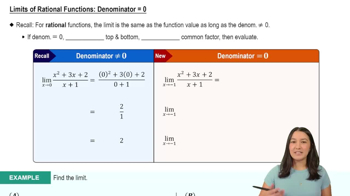Theory and Examples
If limx→4 (f(x) − 5) / (x − 2) = 1, find limx→4 f(x).
 Verified step by step guidance
Verified step by step guidance Verified video answer for a similar problem:
Verified video answer for a similar problem:



 5:21m
5:21mMaster Finding Limits by Direct Substitution with a bite sized video explanation from Patrick
Start learning